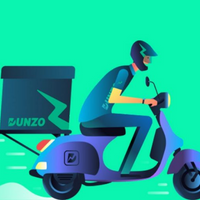As a developer, you need to constantly learn, adapt, grow and progress. The key to that is through education, to stay up to date and keep delivering the best results for your clients. To stay ahead of the competition and build strong customer relationships, you need to keep driving yourself to keep achieving and striving for improved results.
One endeavour where you are likely to be getting a lot of interest is in the development of mobile apps. The main goal of any mobile app is to encourage engagement and you need to develop apps for your clients that achieve this in order to retain users. The truth of the matter is that engagement is crucial to success. A massive 25 per cent of users abandon an app after using it just once. Over half of users uninstall an app all together after a week of having it on their device. Even though many users uninstall apps simply because they don’t end up using them, lack of engagement is a driving factor behind this trend.
How can you develop an app that will bring these results? Various insights came out during the Google Play Engagement Day of 2018 which can help you as a developer to create a successful and engaging app. Let’s delve into these insights now to see how you can up your mobile app development game.

8 Top Tips to Optimise App Engagement
In the informative list below are a few top tips that developers can apply when it comes to creating the best mobile app for their clients that will encourage engagement, improve the user experience, and drive sales.
1. Create meaningful features based on real analytics.
While the figures surrounding retention and conversation are good indications as to how the features are being used within an app, they don’t give the full picture as to how users are really experiencing the app. Similarly, improving features doesn’t necessary enhance user engagement. Therefore, it’s essential to get the data that will actually make the difference. By analysing how users interact with the app, observing the things they enjoy and the challenges they face, you can develop features that will take your app to the next level.
2. Rely on data to identify problems to resolve.
Many developers believe that data is a source of great knowledge – it can help you to see where problems lie. You can harness the power of data by identifying qualitative data coming directly from users of the app which can help you to make changes that will encourage engagement.
3. Improve human-to-human communication.
The best way to communicate is directly between users and the team behind the scenes. It will improve the experience for the user as they get valuable support, and it will also improve your understanding of what you can bring to the table as a developer. Implement an in-app chat feature to open the lines of communication between the user and the developer in the event of IT issues, or between the user and the seller to improve business. This improved communication will lower the rates of negative feedback and increase the rates of revenue simultaneously!
4. Look at it from the user’s perspective.
To see any areas of improvement or difficulties of usage, use the app as a customer and go back to the beginning to see how things work from the off. The first use is the most important one and it could completely change the way the user feels about the app, for better or for worse. Your best chance to improve engagement is to start improving the first use experience. For example, display imagery consistent with the look and brand even from the app store and remove distractions and reduce the simple look of the app. Let users know about any premium subscriptions they can join early and offer a free trial so they can test it out. Celebrate the progress of the user in the app and allow them to unlock new features and content as they progress. This encouragement and incentive will greatly improve the users experience and enhance engagement.
5. Give users goals to work towards.
Again, give some enticement for users of the app not only to download it, but to keep using it. Remember the coffee stamp loyalty card in your wallet? It encourages you to keep going back to get more stamps! Furthermore, if just by signing up to a loyalty stamp card, you receive two stamps from the off, how much more encouraging will that be! Follow the same principle by adding an element of loyalty reward or celebration of progress, but give the user the head start by giving them “two stamps” from the off, perhaps simply from downloading, opening and signing up to the app.
6. Personalise push notifications.
There’s a fine line to be trod in the use of push notifications in mobile apps. Too many notifications and the app will become a nuisance, two few and it will be forgotten about. Make push notifications personalised and uniquely helpful to the user. In this way they are much more likely to see the purpose of the app and how it can benefit them personally. They will be much more likely to keep using it when this is the case.
7. Think about additional app uses.
Don’t limit your app to one kind of function or one kind of audience. Without making it too complicated, add additional features that improve its usability and mean it can be applied to a variety of tasks and situations. The more useful you can make an app, the more likely people will use it.
8. Implement LiveOps for Apps.
LiveOps involves running a “game-as-a-service”, making an app entertaining and engaging with new experiences to take part in every day. This is going to encourage users to log on every day meaning they’re going to be more likely to make purchases, thus driving sales.











